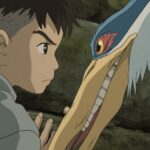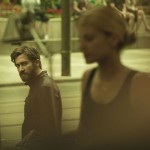Writer/Director Hayao Miyazaki, the co-founder of Studio Ghibli and animator responsible for Castle in the Sky, Princess Mononke, and the Academy Award winning Spirited Away, is now 72 and The Wind Rises is rumoured to be his swan song.
You can sense that there is something different about The Wind Rises, a film so complex in its layered references, so visually spellbinding and so masterful in its period detail, that you can forgive its narrative weaknesses if not its controversial subject matter.
What distinguishes The Wind Rises from Miyazaki’s other films is significant.
For one thing, it is studio Ghibli’s first biopic. In fact, it is a triple biopic, one that says as much about Miyazaki, a designer and writer himself, as it does about the aircraft designer Jiro Horikoshi (born 1903) and the writer Tatsuo Hori (born 1904) both of whom feature in the film.
Jiro, a country boy (Hiro) is passionate about flight, but, short-sighted, cannot be a pilot. In his dreams he is encouraged to build planes by the successful Italian designer Gianni Caproni, whose own prototypes for passenger planes were interrupted by war. En route to his elite engineering college, Jiro helps a pretty girl caught in the Great Kanto earthquake of 1923 but loses touch with her. They meet by chance years later when she exhibits the first signs of TB.
Jiro gets through the Great Depression, but when he starts designing planes, it is the military that is ordering. Jiro impresses his superiors, and is sent to Germany where he meets with fellow engineers who are nonetheless suspicious and guarded of their secrets. Determined to free Japan of dependence on Germany, in 1937 Jiro began work on what was, in 1940 (the Japanese year 2600 or ‘zero’ in the Japanese calendar) dubbed the Mitsubishi Zero Carrier Fighter. The Zero was used to bomb PearlHarbour and, due its light weight, speed and ability to manoeuvre easily, was, for two years, an unassailable threat to the Allies.
In 1937, the same year that Jiro began work on the Zero, Tatsuo Hori completed The Wind has Risen, his semi-autobiographical novel about a woman dying in a TB sanatorium. Despite the film’s controversial nature, it is hardly nationalistic, permeated as it is with European cultural references which include a dying Schubert’s Winterreise and Thomas Mann’s The Magic Mountain, his 1924 novel inspired by Mann’s wife recuperation in a Swiss sanatorium.
It was Tatsuo himself who lost a long battle with tuberculosis and is remembered here through Jori Horikoshi’s fictitious, dying wife (in fact, Jori went on to have five children). The title of Tatsuo’s novel is taken from French poet Paul Valéry’s 1920 poem, Le Cimetière marin: ‘Le vent se lève !… Il faut tenter de vivre’, (‘the wind is rising, we must try to live’) and is used as a refrain in the film.
But there is a further reference, one that makes it clear that this is also a kind of autobiography of Hayao Miyazaki himself. Miyazaki’s second feature was Nausicaa of the Valley of the Wind based on his post-apocalyptic graphic novel that ends with the line, ‘We Must Live’ and refers to the growth of a tree following devastation of the planet, an obvious reference to post WWII Japan.
Other references to Miyazaki’s life include Jori’s friendship with his fellow engineer that reminds you of Miyazaki’s long partnership with Isao Takahata (who like Tatsuo, is a connoisseur French literature), his extensive knowledge of WWII and his love of the Japanese countryside of the Taisho era (1912-26), so prominent in previous films, and here, perhaps, unparalleled in its beauty.
Perhaps the most notable difference between The Wind Rises and Miyazaki’s previous films is that it is not targeted specifically at children But if death features prominently, so, too, does the power of dreams, a force that drove Miyazaki himself to be retiring as the most acclaimed animator in Japan, if not the world.
More controversially, The Wind Rises chronicles the realisation of the dreams of a boy who ended up designing a killing machine. The film concludes with a scene of devastation and the carcasses of planes in a wasteland similar to the scenery of Nausicaa of the Valley of the Wind. Miyazaki’s message, after Japan’s more recent depressions, earth quakes and tsunami is still, that ‘we must live.’
Joyce Glasser – MT film reviews




